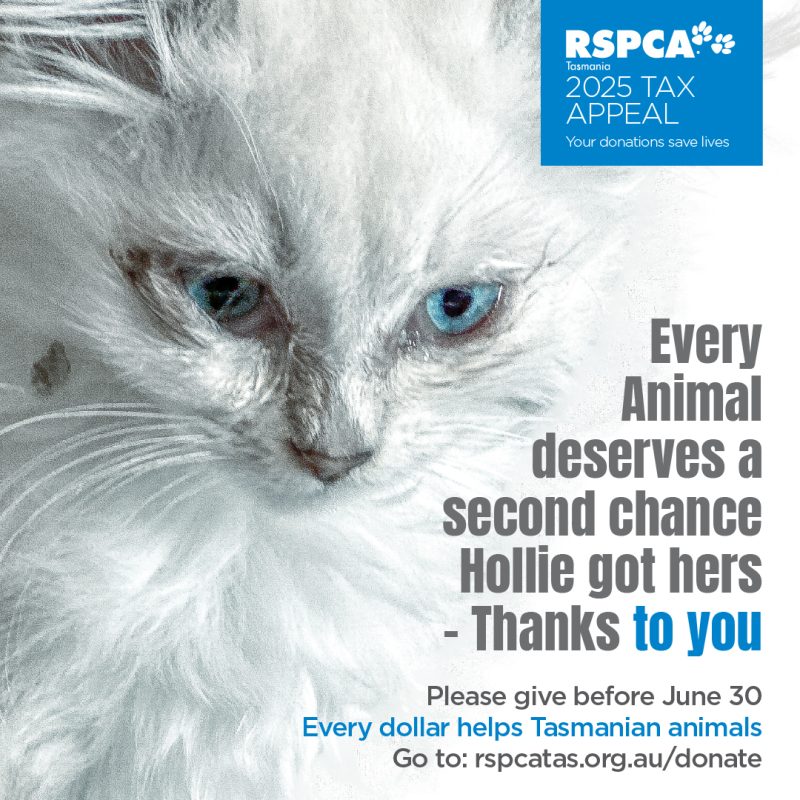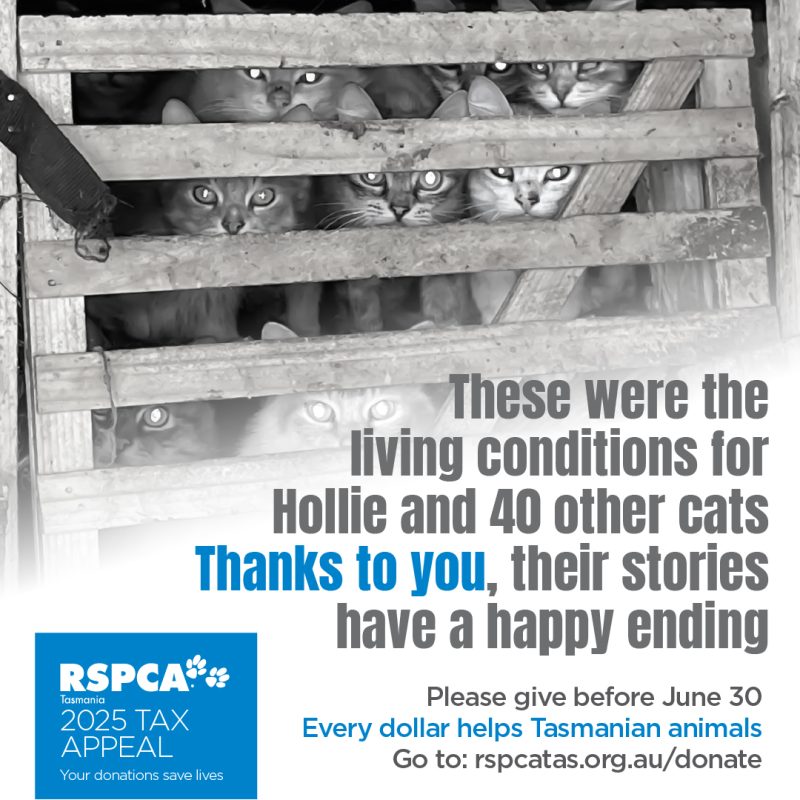Requirements for
Dog Facilities’ Managers
RSPCA Tasmania will be visiting facilities to ensure compliance with the Animal Welfare (Dog) Regs 2016.
These resources are made available, to provide you a checklist in preparation for our visit. To be compliant, please ensure that all records can be identified and readily accessed upon RSPCA Inspectors’ request. Penalties apply for noncompliance.
The Regulations are relevant for all people responsible for dogs and can be viewed here.
These elements of the Regulations apply to everyone:
RESOURCES
Please print out and fill in this checklist to ensure your facility complies with the regulations.
Rehoming
- Vaccinations must be up to date and verifiable.
- Puppies that are rehomed must be accompanied by the microchip number of the puppy, or the microchip number of the dam, or the council the dam is registered with and her council registration number.
- Dogs and puppies must not be rehomed if they are known or suspected to be injured, sick, pregnant, have behavioural issues, are considered dangerous to the community, or are diseased- unless it is clearly disclosure to the new owner.
- Must be over 8 weeks of age.
- Advertisement must specify the microchip number of the puppy, dam or council registration number.
Tethering/exercise
A tethered dog must be:
- Accepting of being tethered.
- Supervised whilst being tethered.
- Have access to water and weatherproof shelter.
- Fitted with a swivel on the tether to prevent becoming tangled.
- Provided with an opportunity to have daily exercise, or at least 1 hour in total a day, off the tether.
- The dog must not be tethered to a moveable object.
- The dog must not be tethered adjacent to a fence, so that it is placed in danger of injury or death by hanging.
Must not tether:
- Puppies under 4 months of age.
- Bitches in season.
- Bitches in advanced stages of pregnancy.
The regulations stipulate that when crating a dog or a puppy you must ensure:
- The crate is of a suitable size so that the animal can turn around, lay out flat with legs outstretched and sit or stand without their head touching the roof.
- Confinement is no longer then 10 hours in any 24-hour period.
Transport of Dogs
- Dogs must be tethered appropriately in vehicle, and not with an incompatible animal.
- Dogs are not to be left unattended in vehicles where they could suffer heat or cold stress.
Additional Requirements for Facility Managers
A person in charge of caring for dogs must be suitably experienced or under the supervision of an experienced person.
Records of each dog must be kept with the following information (unless that information cannot be reasonably obtained eg a pound with a stray dog)
All records must be kept for 3 years.
- the name of the dog;
- if the name of the dog is unknown, a unique identifier for the dog;
- the name, address and telephone number of at least one person with care or charge of the dog;
- the sex of the dog and whether the dog is desexed or not;
- the date of birth of the dog, or the approximate age of the dog if the date of birth is unknown;
- the microchip number of the dog, if micro-chipped;
- the registration number of the dog, if registered;
- if the dog is a puppy that is to be rehomed;
- the microchip number of the dam of the puppy, if micro-chipped; or
- the microchip number of the puppy, if micro-chipped; or
- the registration number of the dam of the puppy, if registered;
- the vaccination status of the dog, whether known or unknown;
- details of any known special medical or dietary requirements;
- the date the dog arrived at the facility;
- if the dog leaves the facility
- the date of the dog’s departure; and
- the destination of the dog; and
- the name of the person who assumed the care or charge of the dog;
- if the dog dies while at the facility
- the date of the dog’s death; and
- the cause of death, if known.
Record requirements for breeding puppies
- the name of the dam, if known;
- if the name of the dam is unknown, a unique identifier for the dam;
- the microchip number of the dam, if micro-chipped;
- the registration number of the dam, if registered;
- the name of the sire, if known;
- the microchip number of the sire, if known;
- the registration number of the sire, if known;
- the date of whelping;
- identification details of each puppy in the litter, including any abnormalities or deaths.
Emergency management plans must be available to every person working in the facility
- there must be an emergency management plan for the facility that details the handling and evacuation of animals on the premises in the event of an emergency;
- the emergency management plan for the facility is reviewed and updated at least once in each 12-month period.
- every person working at the facility must have access to the plan and be aware of his or her obligations under the emergency management plan if an emergency occurs.
Records must be kept ensuring that animals are motioned for adverse, or significant observations, including:
- the eating or drinking habits of the dog, including the drinking of milk if the dog is a puppy;
- the defecation and urination habits of the dog;
- the behaviour, temperament and physical movement of the dog;
- any signs of illness or distress in respect of the dog;
- the condition of the dog’s coat.
A person who records an adverse observation in respect of a dog at a facility must notify the person in charge of the facility.
Facilities to have a written health plan, approved by a veterinary surgeon, detailing procedures in respect to:
- the prevention of common infectious diseases and parasites within the facility;
- the treatment of common infectious diseases and parasites within the facility;
- the eradication of common infectious diseases and parasites within the facility.
A person in charge of a facility must ensure that the name and contact details for a veterinary surgeon, or veterinary clinic, are visibly displayed within the facility so that all persons with care or charge of a dog within the facility have access to the details.
Housing requirements specific to facilities:
A person in charge of a facility must ensure that the facility:
- is designed, constructed, serviced and maintained to prevent access to the facility by unauthorised persons; and
- has an adequate water supply for all dogs housed at the facility; and
- has an area available within the facility, or at a veterinary clinic to which the person has reasonable access, to isolate a dog if required; and
- has biosecurity measures in place that are regularly reviewed and updated if appropriate.
- at the time of any inspection or observation of a dog housed within the facility, there is sufficient light within the facility to enable the inspection or observation; and
- if the facility relies on artificial lighting in any area where dogs are housed, the artificial lighting is as close as is reasonably practicable to lighting that would occur naturally.
Cleaning and disinfecting of facilities:
A person in charge of a facility must ensure that:
- all areas of the facility used to house dogs are cleaned and disinfected:
- before a new dog is introduced to the area; and
- at least once each day; and
- all areas of the facility used to exercise dogs are inspected to ensure they are reasonably clean and free of faeces
- before a new dog is introduced to the area; and
- at least once each day; and
- food preparation and storage areas within the facility, and all containers, utensils and equipment used to prepare and store food, are maintained to an appropriate standard of hygiene; and
- all enclosures used to house bitches while whelping are disinfected before the whelping is expected to commence and after the puppies from the whelping are removed.
Does not apply to an area of the facility:
- where dogs cohabit with people; or
- that is a grassed enclosure.
Isolation of unwell dogs within facilities:
A person with care or charge of a dog at a facility must, if the person suspects that the dog is suffering from a significant infectious disease or severe injury, take the dog to the isolation area of the facility unless:
- to do so would cause unreasonable pain or suffering to the dog; or
- a veterinary surgeon has specified in writing that it is appropriate to house the dog with other animals whilst suffering from the disease or injury; or
- it is unreasonable in the circumstances to relocate the dog.
- applies in respect of a dog, the person with care or charge of the dog at a facility must remove other animals from the area where the dog is located if it is reasonable to do so in the circumstances.
Tethering of dogs at facilities:
A person with care or charge of a dog at a facility must not tether the dog for a continuous period that exceeds 3 hours.
Condition of dog while at facilities:
A person in charge of a facility must ensure that each dog housed at the facility is maintained so as to ensure that the coat of the dog is not matted or tangled.
A person is not guilty of an offence under if:
- the matting or tangling of the coat of a dog is a characteristic of that breed of dog; or
- the condition of the coat of a dog does not promote disease, or cause physical discomfort or injury, to the dog.
Euthanasia of dogs at facilities:
A person in charge of a facility must ensure that there is an area within the facility, separate from any area where animals are housed, that may be used to euthanise a dog if required.
A person must not euthanise a dog at a facility:
- in an area other than the area referred to unless it is unreasonable in the circumstances to relocate the dog to the area; or
- in the presence of another person, unless the other person and the person euthanising the dog have agreed to the other person being present.
Breeding of dogs at facilities:
If dogs are being mated at a facility, the person in charge of the facility must ensure that, while the dogs are being mated, the dogs are:
- isolated from any other dogs within the facility; and
- regularly monitored by a person to ensure that neither dog is distressed, unwell or injured.
A person in charge of a facility must ensure that a bitch whelping at the facility is isolated from other dogs within the facility.
Puppies at facilities:
A person in charge of a facility must ensure that any puppies at the facility are assessed on a weekly basis to ensure that each puppy is achieving a healthy weight gain that is appropriate for the puppy after taking into account the characteristics of the puppy.
Rehoming of dogs:
- a person in charge of a facility must ensure that each dog at the facility is treated to prevent, or remove, gastrointestinal parasites before the dog is rehomed from the facility.
- a person in charge of a facility must ensure that a new owner of a dog rehomed from the facility is provided with accurate written information, at no charge, specifying appropriate care instructions for the dog.
Credit RSPCA Knowledge Base



























